A room with few textures produces the feeling of space. But in the minds of the French, a fluid mix is far more pleasing, considering that a setting with all sleek finishes is unavoidably cold. Layering diverse surfaces soothes the way to the feeling of well-being by softening hard edges and adding warmth.
As it happens, texture has a reputation for shaping rooms much like color, whose opposites attract. Yet, integrating disparate materials can be a challenge, mostly because layering furniture, fabrics and lighting requires pulling together more than myriad variations of rough and smooth, to say nothing of light and dark, hard and soft, matte and shiny and refined and relaxed. Unless there is an arresting mix of both contrasting and complementary surfaces, the feeling is that a setting can be off-putting, even jarring.
Harmony is the ultimate goal. Whether expressing passion for furnishings from the era of the ancien régime or a taste for icons from a later period, such as Napoléon III and Empress Eugénie’s eclectic, overstuffed Second Empire (1852–70) splendor, French artistry demands skillfully juxtaposing soft, sensuous surfaces with those perceived severe—the more subtly, the better. Here’s how the French do just that with self-assurance and skill:
F Faithful to their heritage, exquisitely fashioned, hand-forged railings wrap balconies and staircases, which is hardly surprising, given the French well-known gift for making magnificent objects from iron.
F Unassuming stone fireplaces, with logs ablaze on chilly nights, worn wood floors sometimes laid in a herringbone pattern, and handsome, heavy doors often clad in original fittings temper any stuffiness in dressy spaces.
F In rooms with tall ceilings, exposed wood beams fuse the warmth and charm of rural France with the unmistakably urbane sensibilities of Paris, conveying the feeling of a country house far from the capital.
F Glazing lends an old-world aura to textured, hand-plastered walls by reflecting light differently from paint, depending on the bases and topcoats used. It also calls attention to crown molding and skirting worthy of praise. White walls layered in translucent biscuit, for instance, give the appearance of worn parchment.
F Venetian plaster—first used in Italy during the Renaissance—borrows alluring tints such as dove, ivory and champagne from luminous eighteenth-century silks, bestowing a smooth, decorative finish with movement on walls inspired by the past.
F Marmorino plaster, meaning “little bits of marble” in Italian, dates to Roman times. Comprised of lime and fine marble dust, it is semi-matte, low luster and popular in France, as well as throughout Europe.
F Trompe l’oeil—translated, an artistic medium that “deceives the eye”—makes a flat surface appear three-dimensional without taking up any floor space. At the 1801 Paris Salon, the French, whose sophistication is an extension of their identity, regarded the art form as a negative. Today, however, an optical illusion that invites curiosity prompts interest and is apt to be considered amusing.
F Mellow wood pieces with warm, varied patinas offer telltale signs that a site has evolved over time. An understated mix of historical periods also grounds a room with light-colored walls.
F Textured elements look heavier than those that are smooth. And bright hues signal more importance than neutrals, which often escape notice. For a satisfying look, the French use selectively elements that beg for attention.
F Smooth fabric weaves catch the light, highlighting flat planes with a warm sheen that exudes a more refined spirit than nubby textures, which absorb the light and are casual. (For more on creating a mood with fabrics, see “Time-Honored Textiles,” page 125.)
F Reflective surfaces—crystal chandeliers, antique mirrors with blemished glass and French forties coffee tables among them—draw the eye by multiplying the light while creating instant glamour. After being maligned for most of the twentieth century—mostly because they harbored memories of war and the German occupation of France (1940–44)—furnishings from the 1940s now outshine many collectables. Similarly, mercury lamps and verre églomisé vases (painted on the reverse side of the glass) also radiate fresh modernity.
F Since dramatic textures attract more than their fair share of attention, the French use them sparingly, perhaps offering a clue as to why today more people favor wood finishes rather than unrestrained gilded opulence.

Sheathed in devotion to France, an entry exudes welcoming warmth. Fabric from Lee Jofa swathes Louis XV chairs, flanking an eighteenth-century French buffet from Antica Collection. Both the mirror (from The Gray Door) and the sconces (from Kirby Antiques) are old, but the prints help give the setting a “now” air. All three dealers are in Houston.
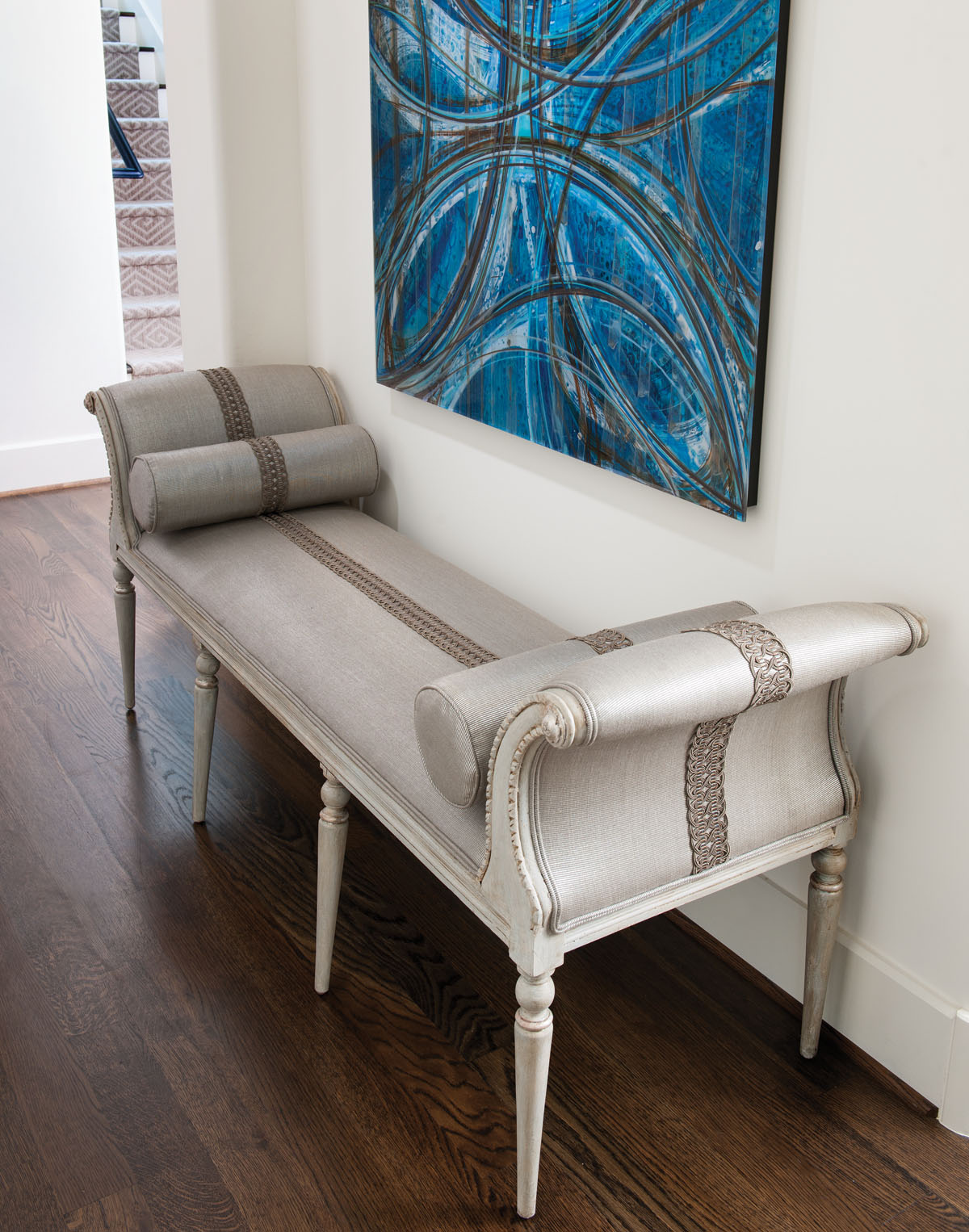
Using a dazzling Samuel & Sons tape in a refreshing way propels a bench with French influences—upholstered in a Duralee metallic—into the limelight. In this era of merging sensibilities, an oversized acrylic-on-acrylic by Aspen artist Christopher Martin further sets this gallery apart.

In keeping with classic French interiors, Venetian plaster walls are the backdrop for an aristocratic powder room that mixes the antique and contemporary. For all the apparent affluence at the Palace of Versailles in 1682, only Louis XIV had use of a bathroom with running water—and powder rooms were intended strictly for powdering one’s wig. The Sun King had a collection of more than 1,000 wigs.
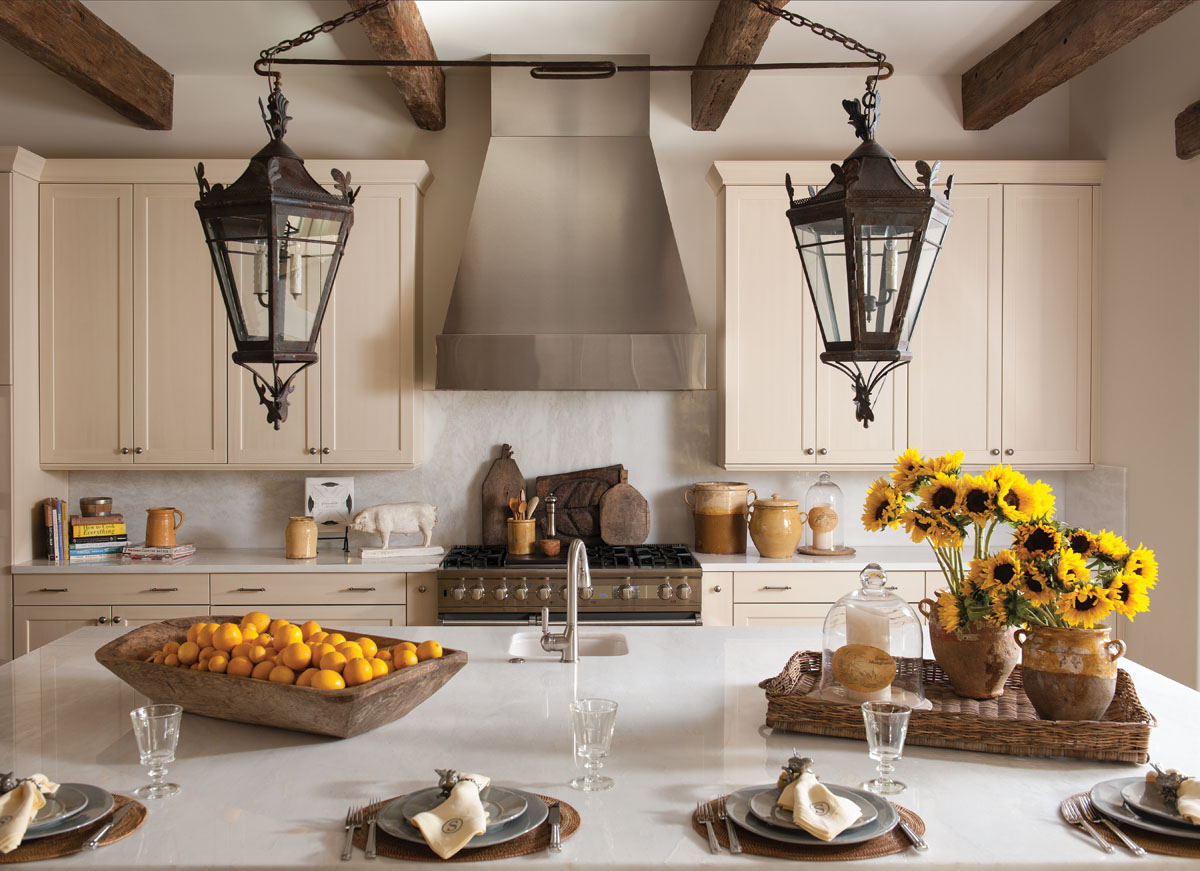
A kitchen gathers yet more stars when garnished with wood beams, old lanterns and sleek marble countertops. Traditionally, the people of Provence used pots de confit for preserving duck or goose for cassoulet, if not to store other perishables. To keep the contents cool when buried halfway in the ground, the bottom halves remained unglazed. Today, jars with cracks and chips are highly prized. In contrast, those without signs of wear do not have the celebrated charm of antiques, according to many. Homegrown lemons fill the vintage dough bowl.
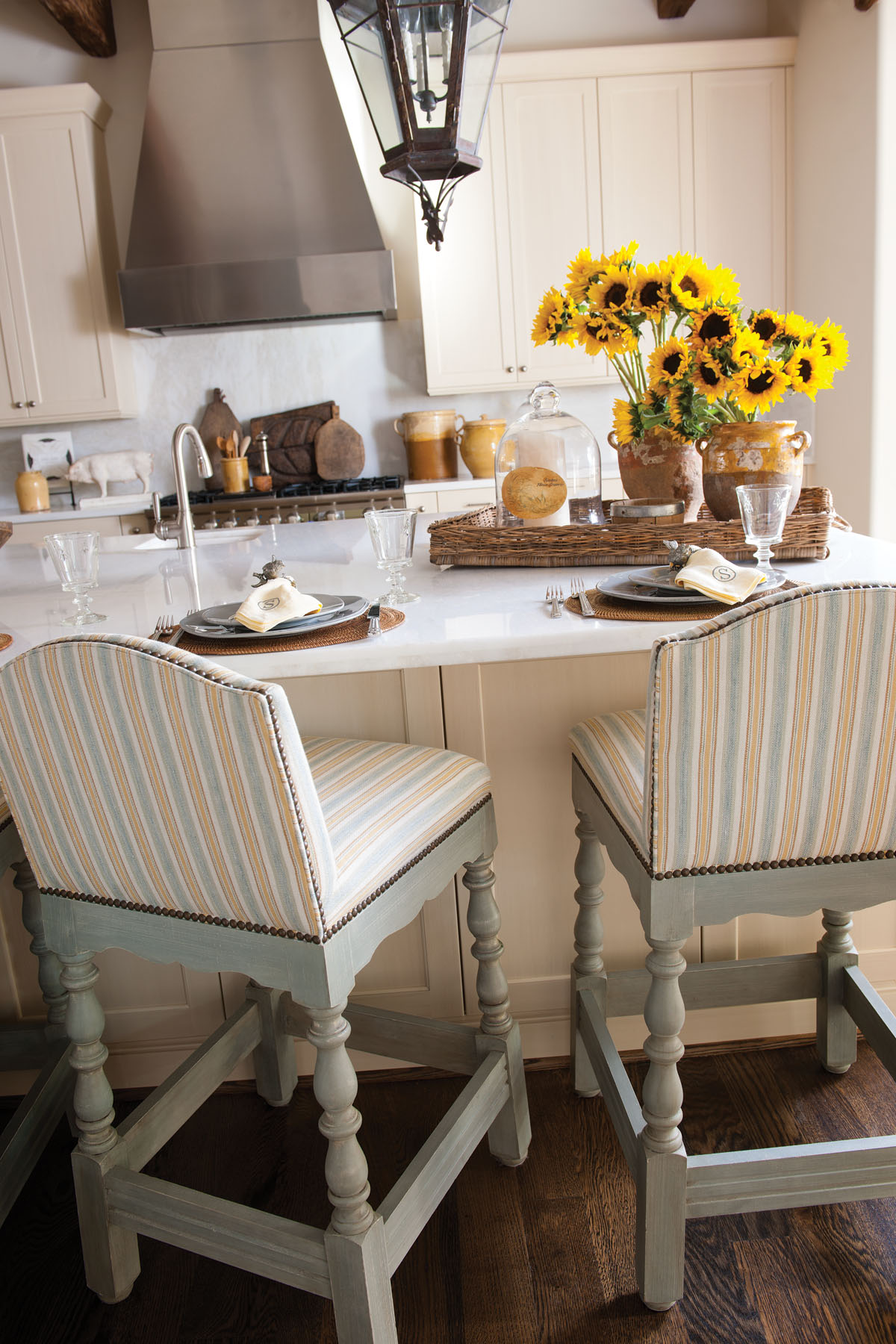
Custom-made barstools sport a contemporary Lee Jofa stripe.
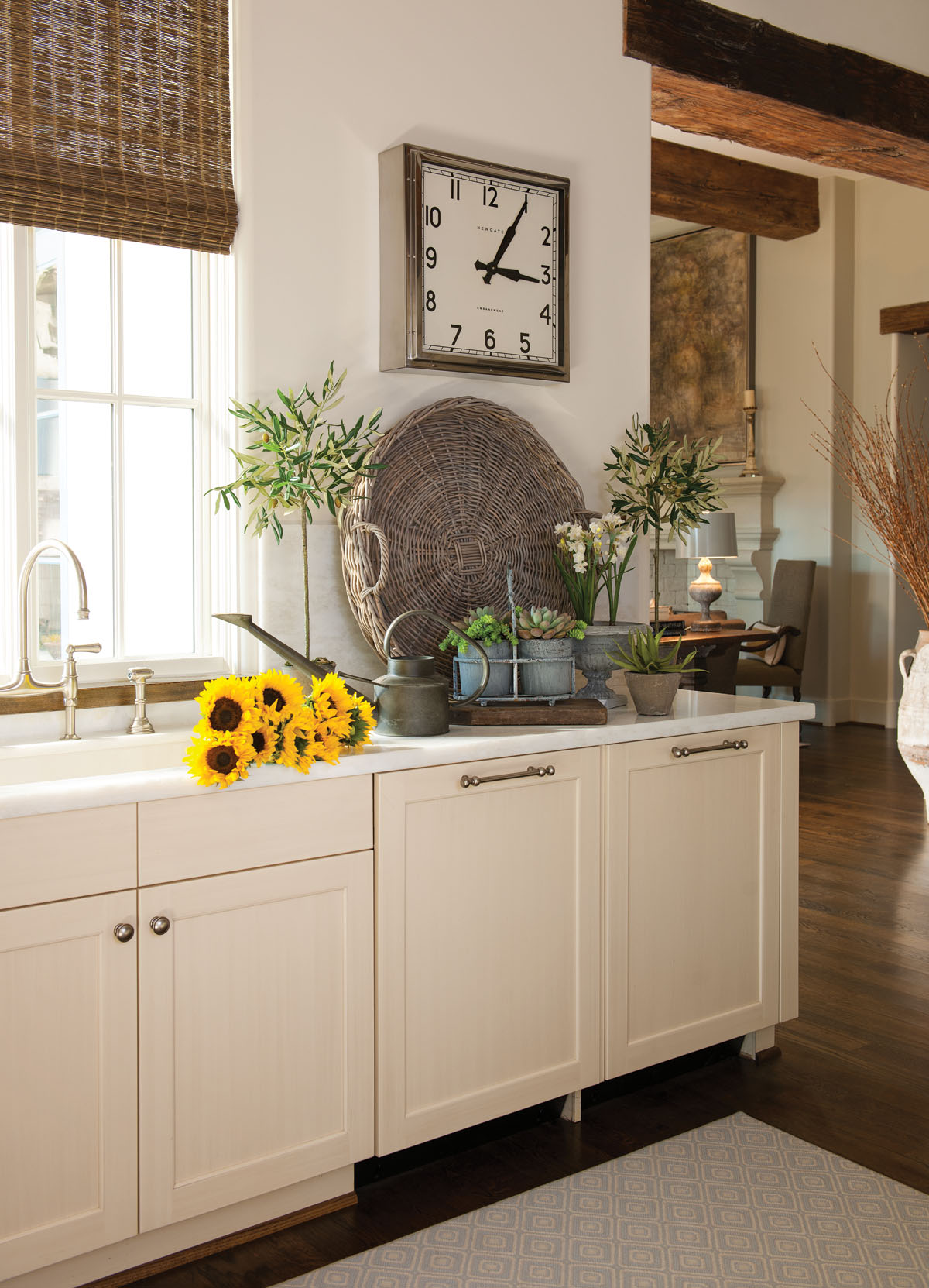
With ample space, a kitchen is divided into zones for prepping, cooking, dining and flower arranging. Countless vessels are at home under the sink. Clock is from Found, Houston.
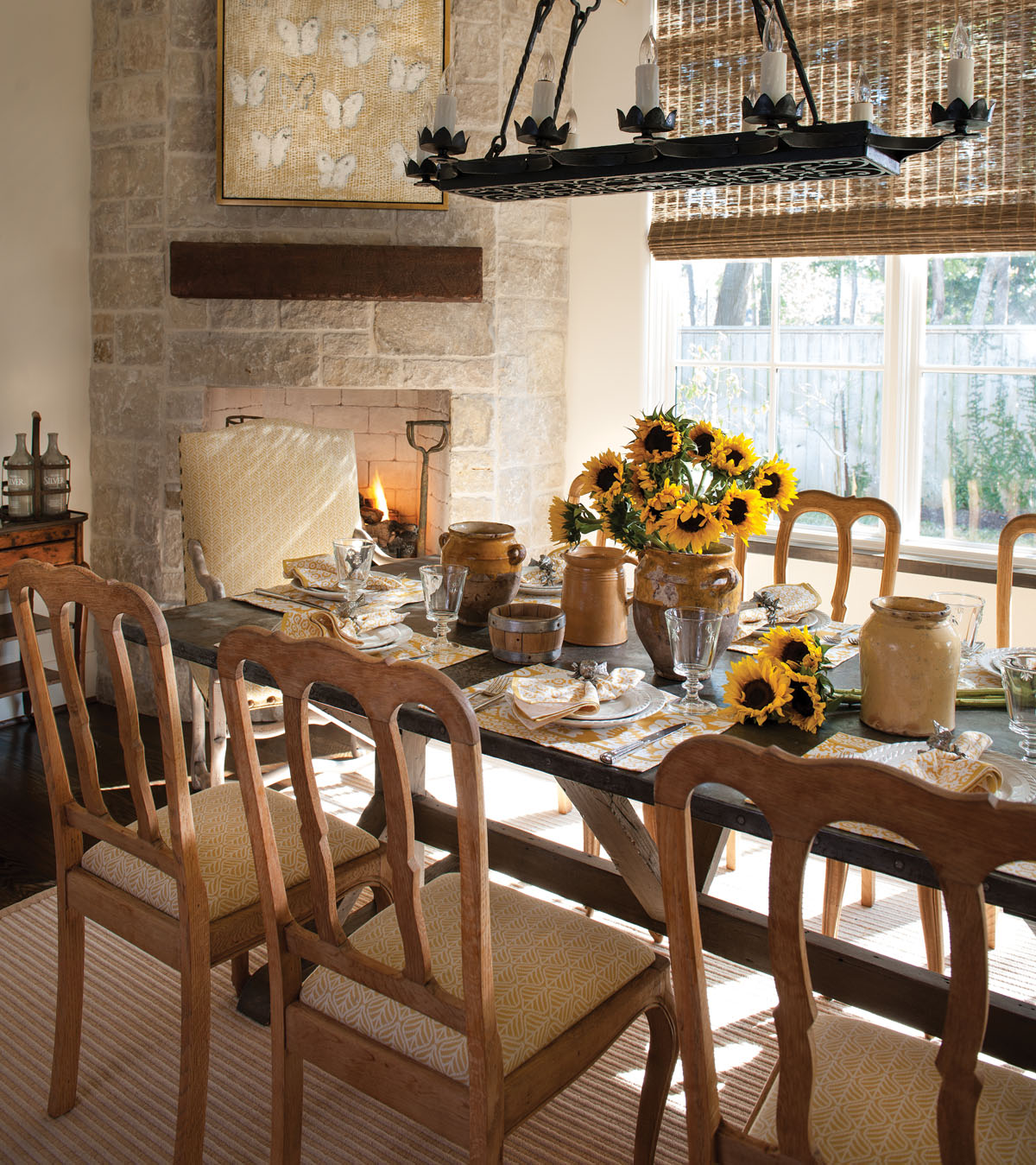
Trading the formality of roses for mellow sunflowers prompts a relaxed feeling; yet a sense of occasion remains. Zinc-topped breakfast table is from Memorial Antiques & Interiors, Houston.
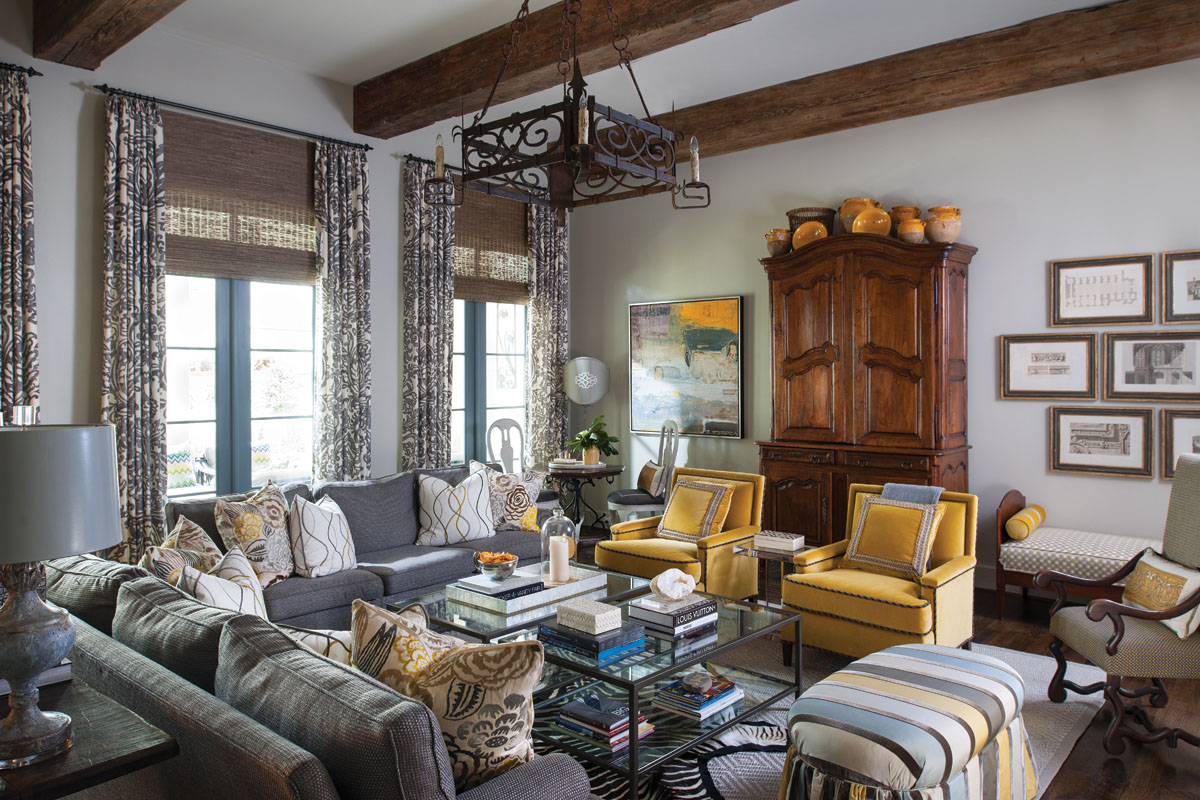
Warm woods, ample textures, clean lines and arresting tones of gray and yellow define a room for living where old meets new. Emperor Napoléon Bonaparte favored Naples yellow and used stripes lavishly in decorating both his state and private apartments. Reinforcing the far-from-opulent mood of today, D & D Drapery, Houston, fabricated the window treatment with a Schumacher print. Two large coffee tables pushed together make a bold, functional statement when within reach of sofas and chairs.
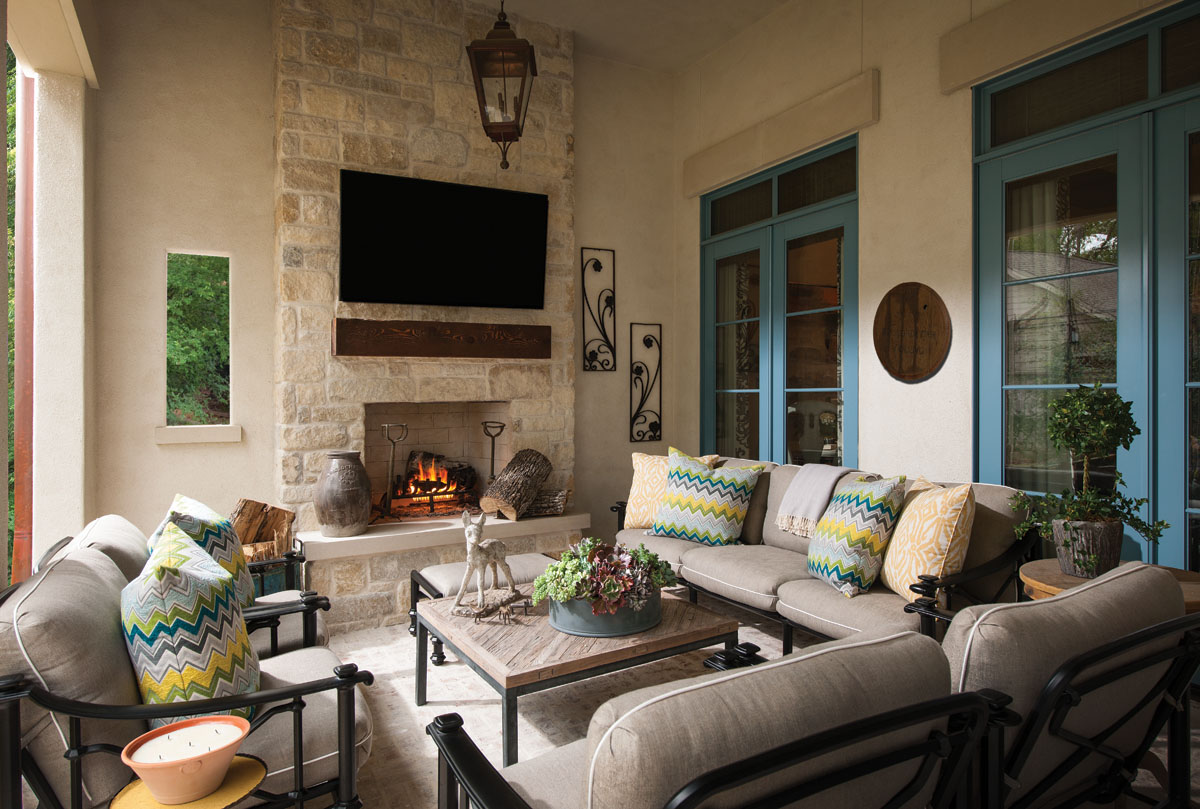
With both the living room and the breakfast room opening onto the veranda, the two joined forces to inspire a harmonious palette.
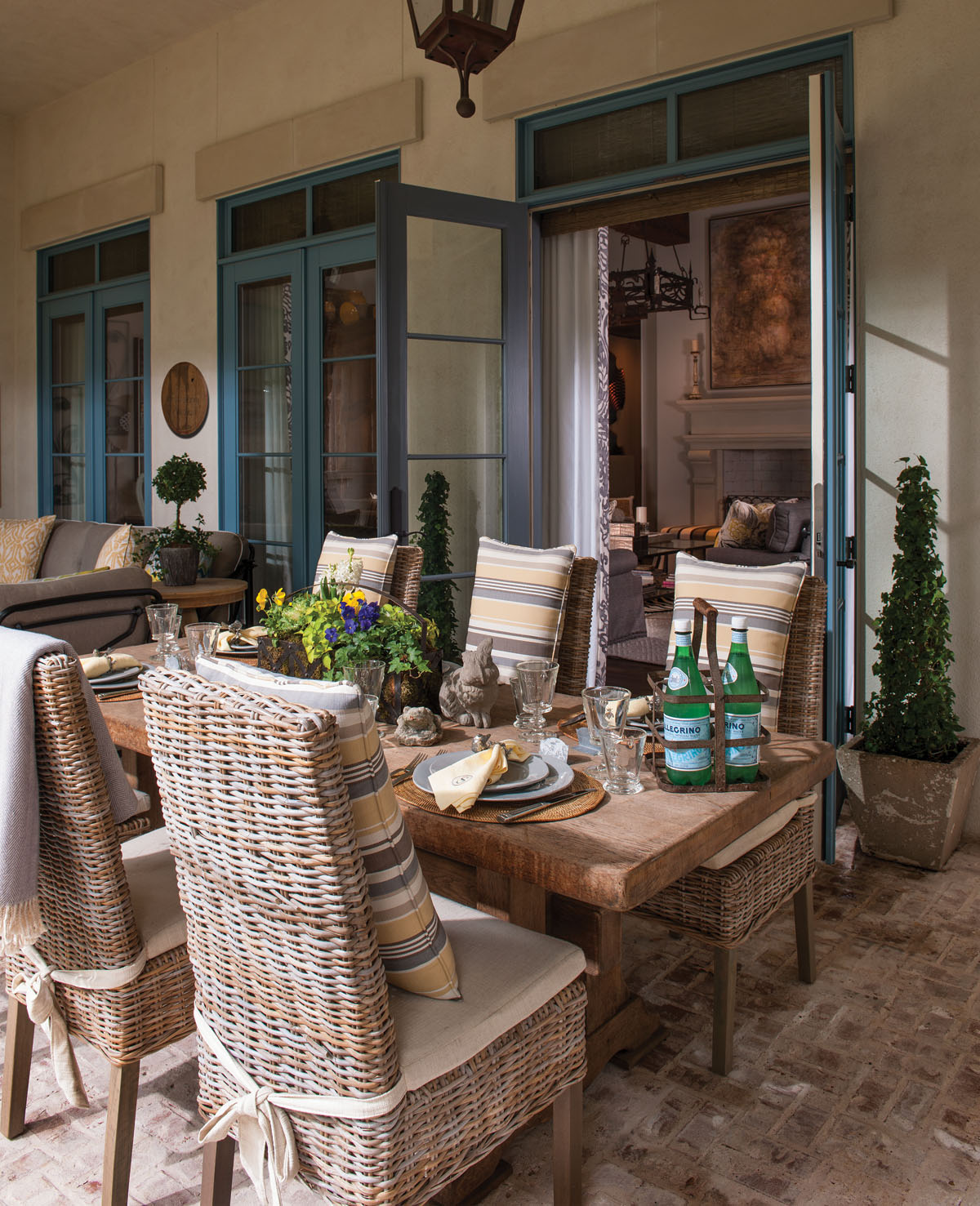
An open-air dining area stands ready to welcome friends for lunch.